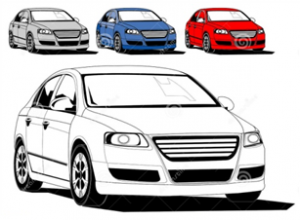
Lesson 4: Nouns
In this section, we will take an in-depth look at the different types of nouns and how they’re used in a sentence.
Objectives:
- To define nouns
- To identify the different types of nouns
- To define the different types of nouns
- To use the different types of nouns in a sentence
Quick Navigation through the Lesson 4:
- Definition
- Common & Proper Nouns
- Singular & Plural Nouns
- Count Nouns & Mass Nouns
- Possessive Nouns
- Pronouns
In the previous lesson, we learned that nouns are usually the subject of sentences. A noun can be a person, place, event or thing—in this section, we’ll study the different types of nouns. To make learning how to use nouns easier, we’ll be providing examples for every kind of noun.
[WpProQuiz 104]
Definition
The extended definition of a noun according to Merriam-Webster is a word that refers to a person, place, event or thing which is the object of a verb or which is described by an adjective.
Types
There are many different ways in which we can group nouns. In this part of this lesson, we’ll be looking at the different categories of nouns and how we can use them when we communicate. We’ll also be listing down examples for every category.
Common & Proper Nouns
One of the ways in which nouns can be divided is into common and proper nouns. In this part, we’ll discuss how the two differ and how they’re used in a sentence.
Common Nouns
 A common noun is a word that refers to a person, place, event or thing which doesn’t pertain to the specific person, place, event or thing—it is not a name.
A common noun is a word that refers to a person, place, event or thing which doesn’t pertain to the specific person, place, event or thing—it is not a name.
For example,
Jane is in the car.
The word car is a common noun.
Proper Nouns
A proper noun is the name of a particular person, place, event or thing.
For example,
Jane is in the car.
The word Jane is a proper noun.
Singular & Plural Nouns
When it comes to general quantity, we can divide nouns into singular and plural nouns. Below, we’ve outlined how we define each of these categories and have taken the liberty of providing examples of how they are used. Singular & plural nouns are usually common nouns.
Singular Nouns
Singular nouns are nouns which pertain to just one person, place, event or thing. It usually doesn’t end with an s.
We use is after the word.
For example:
The box is on the porch.
The girl is sitting by the pool.
The car is at the shop.
If, for instance the word originally ends with an s, we retain the way that the word is spelled.
The bus is going fast.
Plural Nouns
Plural nouns are nouns which pertain to two or more people, places, events or things. They are usually singular nouns with an –s or –es added at the end.
If the singular noun doesn’t end with an s, we add –s to the end of the word.
We use are after the word instead of is.
For example:
The boxes are on the porch.
The girls are sitting by the pool.
The cars are at the shop.
If, for instance the word originally ends with an s, we add –es to the end of the word.
For example:
The buses are going fast.
[WpProQuiz 105]
Count Nouns & Mass Nouns
When we talk about a specific number of things, people, places or events we can divide nouns into count nouns and mass nouns. Definitions and examples are listed below.
Count Nouns
Count nouns are nouns that pertain to a specific number of people, places, objects or things. These are usually accompanied by the words few, many, some, every, each, these and number of. These nouns represent definite quantities. They take the plural form by the addition of –es or –s.
For example:
A few pencils.
Some guys were out on the football field.
A number of girls got caught drinking soda in the classroom.
Mass Nouns
Mass nouns usually refer to an indefinite number of people, places, objects or things. They are usually words which can’t be pluralized by adding –s or –es, or words which can’t be pluralized at all but are plural in themselves. This is usually accompanied by the word much.
For example:
There was so much sand on the beach.
He ate so much rice last night.
Let me count the hair on your head.
Possessive Nouns
 These are nouns which are used to show ownership or possession. This is done by adding an apostrophe (‘) and an s (‘s) to singular nouns and plural nouns not ending in s, and just an apostrophe to plural nouns ending in s.
These are nouns which are used to show ownership or possession. This is done by adding an apostrophe (‘) and an s (‘s) to singular nouns and plural nouns not ending in s, and just an apostrophe to plural nouns ending in s.
For example:
Johnny’s turtle ran away.The sand’s heat was oppressive.The buses’ drivers were fired.
[WpProQuiz 106]
Pronouns
Definition
Like we learned in the previous lesson, pronouns are often used to replace nouns. This is to make it easier to talk about someone or something.
For example:
“Olivia ate the mangoes. She is very full.”
The sentence above sounds less tiresome than the sentence below—because the sentences are only talking about one person, we know that “she” refers to Olivia. Whereas the sentence below sounds redundant because Olivia is mentioned twice in a row.
“Olivia ate the mangoes. Olivia is very full.”
Types of Pronouns
Pronouns can generally only be divided into two kinds of pronouns—singular and plural.
Singular pronouns include he, she, it, her, me, you, him and are (as with nouns) followed by is.
For example:
She is crying.
Plural pronouns include we, us, they, them and are (as with nouns) followed by are.
For example:
They are at the mall.
To sum up this lesson, it can be said that we discussed nouns. We were able to look at nouns and the different ways which we divide them into categories based on how they’re used (to quantify, to indicate possession). We were also able to study how to use pronouns in order to make our paragraphs less taxing to read.
In our next lesson, we’ll be tackling the different kinds of verbs. We’ll also be discussing how verbs behave in different ways in a sentence. We’ll be talking about these action words and why they’re very important when learning how to communicate well in English.
 + 1-888-827-0150
+ 1-888-827-0150 + 44-20-3006-2750
+ 44-20-3006-2750










